Monthly Archives: February 2019

 When Wyoming Medical Center merged with Mountain View Clinic, the people who worked for the clinic had to re-apply for their jobs. Not all were kept, but my sister, Allyn Hadlock was hired by Wyoming Medical Center. When she started her new job, it was also at a new location, Wyoming Medical Center, but the people she works with have made her new job feel like home. They have welcomed her like she is family, even decorating her office on Friday in honor of her birthday.
When Wyoming Medical Center merged with Mountain View Clinic, the people who worked for the clinic had to re-apply for their jobs. Not all were kept, but my sister, Allyn Hadlock was hired by Wyoming Medical Center. When she started her new job, it was also at a new location, Wyoming Medical Center, but the people she works with have made her new job feel like home. They have welcomed her like she is family, even decorating her office on Friday in honor of her birthday.
Allyn loves being a grandmother, and is very hands on with the kids. She picks the oldest two, Ethan and Aurora Hadlock, Up from school three days a week, because their mom is at work.  Their mom, Chelsea’s work is right by Eileen’s cookies, so they usually stop to get a cookie before she drops them off. Some might say the kids are spoiled, but that’s just what grandmas do. Allyn is also very close to her younger granddaughters, Adelaide Sawdon and Mackenzie Moore. Adelaide’s mommy, Jessi thinks her mother should retire and become her nanny, and Allyn would probably like nothing more than to do so. Mackenzie has lived in North Caroline since her birth, but February 1st marched a big change, when the family moved to Laramie, Wyoming so her dad. Shannon Moore could take a job as a football coach at the University of Wyoming. That puts them back n Wyoming for the first time in a long time. Allyn’s daughter, Lindsay and Mackenzie are staying with Allyn and her husband, Chris until March when the final move is made to Laramie. Allyn is ecstatic. Her family is all close again, and all is right in her world.
Their mom, Chelsea’s work is right by Eileen’s cookies, so they usually stop to get a cookie before she drops them off. Some might say the kids are spoiled, but that’s just what grandmas do. Allyn is also very close to her younger granddaughters, Adelaide Sawdon and Mackenzie Moore. Adelaide’s mommy, Jessi thinks her mother should retire and become her nanny, and Allyn would probably like nothing more than to do so. Mackenzie has lived in North Caroline since her birth, but February 1st marched a big change, when the family moved to Laramie, Wyoming so her dad. Shannon Moore could take a job as a football coach at the University of Wyoming. That puts them back n Wyoming for the first time in a long time. Allyn’s daughter, Lindsay and Mackenzie are staying with Allyn and her husband, Chris until March when the final move is made to Laramie. Allyn is ecstatic. Her family is all close again, and all is right in her world.
Allyn’s birthday, because it falls during Valentine’s week, has always been kind of special, but never more so that since her marriage to Chris Hadlock. He always makes sure that she gets two bouquets of flowers, one for her birthday and one for Valentine’s Day. They are always really pretty. Being almost a Valentine’s Day baby, 
 Allyn has always liked hearts. They are her favorite shape. She has always made a special candlelight dinner for her family on her special China. She would set their Valentine’s on their plates and make it a fun evening. Her daughter, Jessi loved it so much that she does the same for my family now! It is really special, and less expensive than going out. Nom reservations needed. It’s a wonderful tradition. Today is Allyn’s birthday. Happy birthday Allyn!! Have a great day!! We love you!!
Allyn has always liked hearts. They are her favorite shape. She has always made a special candlelight dinner for her family on her special China. She would set their Valentine’s on their plates and make it a fun evening. Her daughter, Jessi loved it so much that she does the same for my family now! It is really special, and less expensive than going out. Nom reservations needed. It’s a wonderful tradition. Today is Allyn’s birthday. Happy birthday Allyn!! Have a great day!! We love you!!
 My grand nephew, Jake Harman has really come into his own over the past few years. We have watched Jake go from being a footloose kid, who didn’t really have any definite direction in life, to a family man with three kids who absolutely love their Daddy. Jake and his wife, Melanie are perfect for each other. Their personalities are quite opposite of each other, and maybe that is part of why their relationship works. As to the children…Jake loves kids, and they love him. He can get them laughing in an instant. I think that is mainly because Jake is a big kid himself.
My grand nephew, Jake Harman has really come into his own over the past few years. We have watched Jake go from being a footloose kid, who didn’t really have any definite direction in life, to a family man with three kids who absolutely love their Daddy. Jake and his wife, Melanie are perfect for each other. Their personalities are quite opposite of each other, and maybe that is part of why their relationship works. As to the children…Jake loves kids, and they love him. He can get them laughing in an instant. I think that is mainly because Jake is a big kid himself.
Speaking of kids, Jake is now the assisting the youth pastor at Mountain View Baptist church. As I said, Jake  is great with kids, but as we all know, teenagers are a different thing. Teenagers take patience, tempered with stubbornness. It isn’t that teenagers are bad people, but just that they are growing up and they want to show that to others. Teenagers love to show their teacher, or in this case, youth leader, that teenagers run the show. I know this, because like Jake, I was a Sunday School teacher for the teenagers. I’ll never forget my first day. The students told me, “We have gone through a lot of teachers!” They were proud of that, but unfortunately for them, they hadn’t met me…yet. My comment was, “Well, you won’t go through me!” And they didn’t. So Jake, if you want to use
is great with kids, but as we all know, teenagers are a different thing. Teenagers take patience, tempered with stubbornness. It isn’t that teenagers are bad people, but just that they are growing up and they want to show that to others. Teenagers love to show their teacher, or in this case, youth leader, that teenagers run the show. I know this, because like Jake, I was a Sunday School teacher for the teenagers. I’ll never forget my first day. The students told me, “We have gone through a lot of teachers!” They were proud of that, but unfortunately for them, they hadn’t met me…yet. My comment was, “Well, you won’t go through me!” And they didn’t. So Jake, if you want to use  that one, it’s on the house. Teachers of teenagers need all the help they can get. Just ask your Aunt Liz. That’s why we start with babies.
that one, it’s on the house. Teachers of teenagers need all the help they can get. Just ask your Aunt Liz. That’s why we start with babies.
In Jake’s case, I think the teenagers will find that he is really a lot of fun. He loves being goofy, and laughing, as well as making others laugh. That gives him an edge when it comes to handling kids, and even teenagers. He can make even studying fun, and the fun activities even more fun. When you start the day out with humor, it’s always going to be a sunny day. And Jake has that funny bone trait going on, so I know the kids he works with will be blessed by him. Today is Jake’s birthday. Happy birthday Jake!! Have a great day!! We love you!!
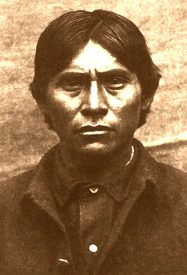 Imagine being given the name Haskay-bay-nay-natyl, at birth. Nevertheless, the name, which means “the tall man destined to come to a mysterious end,” was given to a baby born in the 1860s on the San Carlos Reservation in Arizona. Because his name was strange and difficult to pronounce, the citizens of Globe simply called him “Kid.” Haskay-bay-nay-natyl was most likely a White Mountain Apache.
Imagine being given the name Haskay-bay-nay-natyl, at birth. Nevertheless, the name, which means “the tall man destined to come to a mysterious end,” was given to a baby born in the 1860s on the San Carlos Reservation in Arizona. Because his name was strange and difficult to pronounce, the citizens of Globe simply called him “Kid.” Haskay-bay-nay-natyl was most likely a White Mountain Apache.
Eventually, the nickname was changed to the Apache Kid, and he was said to have been the fiercest Apache, other than Geronimo. The Apache Kid learned English at an early age, and began working odd jobs in Globe. Soon, he was befriended by the famous scout, Al Sieber. At that time, early settlers of the Southwest faced numerous raiding bands of Apache and General George Crook had come up with the idea to use Apache to fight other Apache. They began enlisting Apache Indians from San Carlos and other reservations. The enlisted scouts could locate the trails that the hunted Apache traveled. In 1881, the Kid enlisted in the Indian Scouts. He was so good at the job that he was promoted to sergeant in July, 1882. The following year he accompanied General George Crook on the expedition of the Sierra Madre.
The Geronimo Campaign of 1885-1886 found the Kid in Mexico early in 1885 with Sieber. When the Chief of Scouts was recalled that fall, Kid rode with him back to San Carlos.
Apache Kid re-enlisted with Lieutenant Crawford’s call for one hundred scouts for Mexican duty, and again went 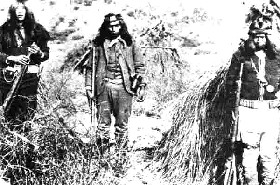 south in late 1885. In the Mexican town of Huasabas, on the Bavispe River, the Kid nearly lost his life in a drunken riot that he participated in. The judge in the case decided that rather than see the Apache Kid shot by a Mexican firing squad, he would fine him twenty dollars. The Army sent him back to San Carlos. In May, 1887 the Apache Kid was left in charge of the Indian Scouts and guardhouse at San Carlos when Captain Pierce and Al Sieber, an Anglo scout, were both gone on business. Though the brewing of Tiswin, a beverage made of fermented fruit or corn, was illegal on the reservation, but the white officers gone, so the Indian Scouts decided to have a party. As the liquor flowed freely, a man named Gon-Zizzie killed the Apache Kid’s father, Togo-de-Chuz. Kid’s friends, in turn, killed Gon-Zizzie. However, the killing of Gon-Zizzie was not enough for the Apache Kid, who then went to the home of Gon-Zizzie’s brother, Rip, and killed him too.
south in late 1885. In the Mexican town of Huasabas, on the Bavispe River, the Kid nearly lost his life in a drunken riot that he participated in. The judge in the case decided that rather than see the Apache Kid shot by a Mexican firing squad, he would fine him twenty dollars. The Army sent him back to San Carlos. In May, 1887 the Apache Kid was left in charge of the Indian Scouts and guardhouse at San Carlos when Captain Pierce and Al Sieber, an Anglo scout, were both gone on business. Though the brewing of Tiswin, a beverage made of fermented fruit or corn, was illegal on the reservation, but the white officers gone, so the Indian Scouts decided to have a party. As the liquor flowed freely, a man named Gon-Zizzie killed the Apache Kid’s father, Togo-de-Chuz. Kid’s friends, in turn, killed Gon-Zizzie. However, the killing of Gon-Zizzie was not enough for the Apache Kid, who then went to the home of Gon-Zizzie’s brother, Rip, and killed him too.
When the Apache Kid and the four other scouts returned to San Carlos on June 1, 1857, both Captain Pierce and Al Sieber were there ahead of him. Captain Pierce ordered the scouts to disarm themselves and the Kid was the first to comply. As Pierce ordered them to the guardhouse to be locked up, a shot was fired from the  crowd who had gathered to watch the display of events. In no time, the shots became widespread and Al Seiber was hit in the ankle, which ended up crippling him for life. During the melee that followed, the Apache Kid and several other Apache fled. Though it was never determined who fired that shot that struck Sieber, it was for sure not the Kid nor the other four scouts ordered to the guardhouse as they had all been disarmed.
crowd who had gathered to watch the display of events. In no time, the shots became widespread and Al Seiber was hit in the ankle, which ended up crippling him for life. During the melee that followed, the Apache Kid and several other Apache fled. Though it was never determined who fired that shot that struck Sieber, it was for sure not the Kid nor the other four scouts ordered to the guardhouse as they had all been disarmed.
Over the next few years, Apache Kid was accused of, imprisoned for, escaped from or was released from prison for many crimes. It is not certain if he was guilty of these things or not. Some said that he was innocent and actually helped those under attack, but many said he was the attacker. Eventually, the Apache Kid disappeared and was never officially seen again. Some said he died, while other said he went to Mexico to a secret mountain hideaway. The jury is still out as to whether he was a good guy, or a bad guy, and the world will most likely never know.
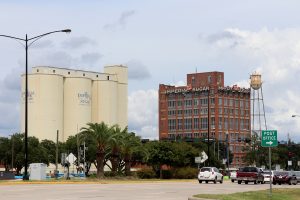 Anytime an industrial accident happens, an investigation follows. With each investigation, come answers to what happened, and eventually better safety regulations to prevent future accidents from occurring. On February 7, 2008, the Imperial Sugar Plant in Wentworth, Georgia exploded, killing 14 people and injuring 47 more. The explosion was a mystery, for a while. An attack didn’t make sense. the plant wasn’t a typical terrorist target.
Anytime an industrial accident happens, an investigation follows. With each investigation, come answers to what happened, and eventually better safety regulations to prevent future accidents from occurring. On February 7, 2008, the Imperial Sugar Plant in Wentworth, Georgia exploded, killing 14 people and injuring 47 more. The explosion was a mystery, for a while. An attack didn’t make sense. the plant wasn’t a typical terrorist target.
Eventually, the investigators traced the root of the explosion to sugar dust. How could that be, you might ask, but dust is explosive…and not just sugar dust. The answer is, “Yes, dust is explosive.” Dust explosions can happen when a build up of dust particles is ignited by something as simple as static electricity or tool sparks. The Imperial Sugar Plant was built in 1916 and still operated with out of date construction materials and methods. It also suffered from poor housekeeping practices, which is what lead to the explosion of 2008. It could have probably been avoided if the work spaces had been kept clean. I don’t eat much sugar these days, and when I read about things like a dirty work space in a sugar plant, I think that maybe that is not a bad thing.
According to the report, the machinery used to process the sugar was not well maintained, and would spill sugar onto the floor and surrounding areas. the amount of sugar often built up to knee deep. Workers would use compressed air to clean the floors of loose sugar dust, which just caused it to accumulate in high places such as rafters, beams, light fixtures and inside ventilation ducts. There were dust collectors, but these were not regularly cleaned and maintained, and were too small to handle the amount of dust created by the practice of blowing the sugar out of the way.
To complicate matters, there was a tunnel underneath the silos used to store the sugar. A steel conveyor belt was used to transport the sugar. Because of poor maintenance, the conveyor belt regularly became blocked by clumps of sugar, which would then spill sugar dust onto the floor. In 2007 the company decided to enclose this conveyor belt in steel sheets to prevent contamination, but this took away the ventilation that cleared dangerous accumulations of sugar dust from the tunnel.
The first explosion took place inside the enclosed conveyor belt. A blockage caused a buildup of sugar dust. Then an overheated bearing created an the necessary ignition spark. This first sugar dust explosion traveled throughout the building, causing numerous other explosions as the accumulated dust became airborne and  ignited. The explosion was powerful enough to buckle the building’s concrete floors, sending the accumulated dust on the floor into the air, as well as knocking high area dust down.
ignited. The explosion was powerful enough to buckle the building’s concrete floors, sending the accumulated dust on the floor into the air, as well as knocking high area dust down.
The management at Imperial Sugar knew all about the sugar dust explosion risk, but did nothing to prevent this catastrophe from happening. Their lack of preparation, and the loss of life, caused new legislation to be created to manage combustible dust hazards, and OSHA has labelled combustible dust one of their top priorities in the upcoming years. Unfortunately, it took a catastrophe of epic proportions to get the legislation in place.

 My niece, Jenny Spethman has such a sweet spirit. She loves the Lord, and loves to study God’s word. Her time spent in the word has given her a wisdom that not many people have. Her favorite time to fellowship with God is early in the morning, before her family is out of bed yet. Because of that, she sees some amazing mornings. Jenny loves the sunrise, and being awake while the moon is still bright in the sky. I think quiet time spent looking at God’s amazing skies, makes Jenny feel closer to God.
My niece, Jenny Spethman has such a sweet spirit. She loves the Lord, and loves to study God’s word. Her time spent in the word has given her a wisdom that not many people have. Her favorite time to fellowship with God is early in the morning, before her family is out of bed yet. Because of that, she sees some amazing mornings. Jenny loves the sunrise, and being awake while the moon is still bright in the sky. I think quiet time spent looking at God’s amazing skies, makes Jenny feel closer to God. 
Jenny’s life is full and busy. From sports for her three sons, Xander, Zack, and Isaac, to dance classes and shopping with her daughter, Aleesia, Jenny and her husband, Steve are always on the go. I think that the amount of activity this family participates in, would be enough to exhaust most people, but they just keep going. Jenny and Steve want their children to be active, and to be able to enjoy the sports they like. They want them to broaden their horizons and to be able to become the people they want to in the future.
Jenny and Steve love to engage their family in lots of outdoor activities. From motorcycle riding in the summer to snowmobiling in the winter, they have shown their kids that the weather doesn’t have to hamper the fun. They love to go camping and 
 swimming at the lake, and on the mountain too. They often take their kids out to practice shooting, and learning gun safety. The boys love to go hunting with their dad, and once each one has passed the hunter safety course, they are allowed to hunt too. Jenny and Aleesia love to have their girl time outings, and shopping is often the go to plan of the day. With all that activity, you might say that there is never a dull moment. Today is Jenny’s birthday. Happy birthday Jenny!! Have a great day!! We love you!!
swimming at the lake, and on the mountain too. They often take their kids out to practice shooting, and learning gun safety. The boys love to go hunting with their dad, and once each one has passed the hunter safety course, they are allowed to hunt too. Jenny and Aleesia love to have their girl time outings, and shopping is often the go to plan of the day. With all that activity, you might say that there is never a dull moment. Today is Jenny’s birthday. Happy birthday Jenny!! Have a great day!! We love you!!
 New York City is known for its jaywalking. It may not be the jaywalking capitol of the world, but it has been know to have many jaywalking deaths. That situation inspired the city to install the first walk/don’t walk signs in history on February 5, 1952. Not every inspiration or invention brings change for the better, and I don’t think that all regulation is a good thing, but when it comes to a meeting between a car and a pedestrian, the pedestrian will lose every time. The use of these pedestrian traffic signs are still used today in order to make streets safer.
New York City is known for its jaywalking. It may not be the jaywalking capitol of the world, but it has been know to have many jaywalking deaths. That situation inspired the city to install the first walk/don’t walk signs in history on February 5, 1952. Not every inspiration or invention brings change for the better, and I don’t think that all regulation is a good thing, but when it comes to a meeting between a car and a pedestrian, the pedestrian will lose every time. The use of these pedestrian traffic signs are still used today in order to make streets safer.
Walk/Don’t Walk signs are just a normal fixture these days. We use them at every busy intersection, and don’t give them a second thought…unless they seem to be taking too long to change. Then we feel annoyed, or even cross against the light, which is still jaywalking, even though we are at a crosswalk. While it isn’t uncommon to be annoyed at the wait to cross the street, it can be nice to have that assistance when there is a lot of traffic.
The walk/don’t walk signs have changed over the years, from the very basic style installed in New York City in 1952, to the more modern ones that tell you when to walk or to wait. These are of course designed with the visually impaired person in mind. Our society have become more aware of the needs of the handicapped, and the voice control feature is truly vital.
Strangely, the Walk/Don’t Walk sign has not always been an apostrophe in the word “don’t.” When the first don’t walk signs were installed in New York, they didn’t have an apostrophe between the letters n and t, which makes that the sign was written as ‘dont walk’. It is thought that these signs lack an apostrophe, because it made the stop command more urgent. Another theory about why the signs missed the apostrophe was because  they were made from a single-piece neon light, which made it difficult to add the apostrophe. I don’t suppose we will ever know why, for sure.
they were made from a single-piece neon light, which made it difficult to add the apostrophe. I don’t suppose we will ever know why, for sure.
Between 1999 and 2000, it was decided that the traditional ‘walk’ and ‘don’t walk’ signs should be phased out, because they were difficult to understand for people who didn’t speak English. Many pedestrian accidents occurred with tourists in New York and therefore the city decided to change the traditional sign into a simple stick figure of a walking man when green, and a raised hand when red. Whichever type of walk/don’t walk signs you have in your town, you can be sure that the signs have saved lives.
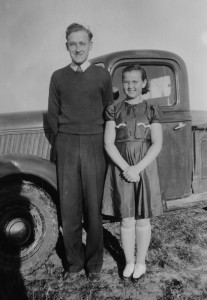
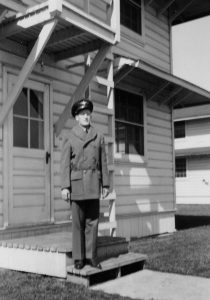 A few months after my husband, Bob’s uncle Frank Knox passed away, I was having an email conversation with Frank’s son, Greg, and we were discussing some of Frank’s time in the military, when Greg told me about his dad’s time in the Civilian Conservation Corps (CCC). The CCC was a public work relief program that operated from 1933 to 1942 in the United States for unemployed, unmarried men. Originally for young men ages 18–25, it was eventually expanded to ages 17–28. Right after Frank graduated from high school in 1937, which was in the middle of the Great Depression, he went to work for a local rancher. He got the job because of his experience in driving a team of horses on a mowing machine and a dump rake, which he learned helping out on his brother, Robert Knox’s sheep ranch. The farmer saw the value in hiring this young man to help with the alfalfa harvest of that season.
A few months after my husband, Bob’s uncle Frank Knox passed away, I was having an email conversation with Frank’s son, Greg, and we were discussing some of Frank’s time in the military, when Greg told me about his dad’s time in the Civilian Conservation Corps (CCC). The CCC was a public work relief program that operated from 1933 to 1942 in the United States for unemployed, unmarried men. Originally for young men ages 18–25, it was eventually expanded to ages 17–28. Right after Frank graduated from high school in 1937, which was in the middle of the Great Depression, he went to work for a local rancher. He got the job because of his experience in driving a team of horses on a mowing machine and a dump rake, which he learned helping out on his brother, Robert Knox’s sheep ranch. The farmer saw the value in hiring this young man to help with the alfalfa harvest of that season.
Nevertheless, the job was obviously temporary, it was a relief when on July 1, 1937, Frank made the decision to join the CCCs. Frank says that the decision to join the CCCs was purely out of desperation. Frank received his notice and was ordered to train in Miles City, Montana. Frank was stationed in Haugen, Montana attached to the 956 Company which was working in conjunction with the Forest Service. The site was Camp F9 with the forest service. Frank spent 18 months with this company, but was allowed to take 9 months leave in the middle of that service, though he never quite knew how that had been arranged. He went to his Freshman year in college, and then returned to the CCC to complete his 18 months of service. In the CCCs, Frank would make $30 a month, $25 of which would go home to help the family. Because he also received room and board, the $5 spending money he had a month was enough. Franks says he didn’t want for anything, and in fact, gained 15 pounds in those first months. Frank fought several forest fires in his time in the CCCs, but he knew that fire fighting was really not for him. Frank went to work in the kitchen, and then later applied for and received the position of assistant educator, and he was the editor of The Mountain Chieftain the camp newspaper. Frank also taught the Agriculture class to 8th grade boys in the area.
When Frank was released from the CCCs, he moved back to his parents home, now in Ellensburg, Washington, where he began his college career at Central Washington College of Education. Frank didn’t know that he was a 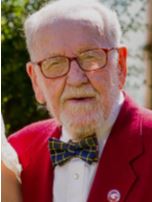
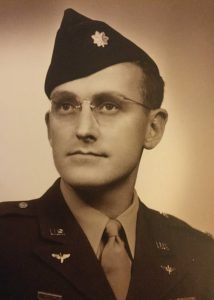 born teacher, and so he went to college and earned a Bachelors Degree in electrical engineering from Washington State College, now Washington State University, in the spring of 1948. He had a job lined up with the Clark County Public Utility District in Vancouver, Washington, but the Vanport Flood on the lower Columbia River wiped out the new post-war housing in the Portland area, causing the job offer to be withdrawn. Frank was offered an instructor’s position in the electrical engineering department at Washington State College, and thus began his 37 year career at Washington State University. Frank was an amazing man, and very smart. It was a pleasure knowing him. Today would have been Great Uncle Frank’s 99th birthday. Happy birthday in Heaven Uncle Frank. We love and miss you very much.
born teacher, and so he went to college and earned a Bachelors Degree in electrical engineering from Washington State College, now Washington State University, in the spring of 1948. He had a job lined up with the Clark County Public Utility District in Vancouver, Washington, but the Vanport Flood on the lower Columbia River wiped out the new post-war housing in the Portland area, causing the job offer to be withdrawn. Frank was offered an instructor’s position in the electrical engineering department at Washington State College, and thus began his 37 year career at Washington State University. Frank was an amazing man, and very smart. It was a pleasure knowing him. Today would have been Great Uncle Frank’s 99th birthday. Happy birthday in Heaven Uncle Frank. We love and miss you very much.
 My nephew, Dave Chase is a good natured, and often funny guy. He likes a good joke and in general comedic situations. That is not what one would expect from him when you first meet him, however, because he seems a bit reserved…until you get to know him. Dave is the kind of man you like immediately, because he has a pleasing personality. He’s easy to talk to and intelligent, making conversations with him quite interesting. Dave has been a chief reservoir engineer, working for the Bureau of Land Management for a number of years, and in fact, knew my Aunt Sandy Pattan before he knew his future wife, my niece, Toni. Aunt Sandy was a little surprised when Dave told her who he was dating, and Dave was equally surprised when Aunt Sandy told him that Toni was her grandniece. They were both surprised.
My nephew, Dave Chase is a good natured, and often funny guy. He likes a good joke and in general comedic situations. That is not what one would expect from him when you first meet him, however, because he seems a bit reserved…until you get to know him. Dave is the kind of man you like immediately, because he has a pleasing personality. He’s easy to talk to and intelligent, making conversations with him quite interesting. Dave has been a chief reservoir engineer, working for the Bureau of Land Management for a number of years, and in fact, knew my Aunt Sandy Pattan before he knew his future wife, my niece, Toni. Aunt Sandy was a little surprised when Dave told her who he was dating, and Dave was equally surprised when Aunt Sandy told him that Toni was her grandniece. They were both surprised.

Dave is all about family. From the moment he met Toni, he has worked hard at bonding with her son, James Renville, and these days they are good friends. James has a dad, but he also has a great step-dad, and they have a great time. When he married my niece, Dave inherited a large extended family. Toni has 4 siblings, and there are a number of nieces, nephews, grand nieces and a grand nephew. If you ask the kids about their Uncle Dave Chase, they will all tell you the same thing…”He loves his nieces and nephews.” Now to have one child say that is one thing, but when the consensus is in total agreement, you know that it is very true. Dave is generous and kind, and he is a lot of fun to be around. The kids all love him, and Dave feels the same way.

Dave is very athletic. He loves to play basketball, and I’m told that Dave runs circles around the younger crowd. Dave keeps himself in great shape, and you know that the work you are doing is working, when a kid says that you can run circles around the kids. Recently, Dave, like many government workers, spent a month on furlough because of the government shutdown, but Dave didn’t just sit around sulking, he took the opportunity to go skiing in Jackson. Dave loves to ski, and he had a great time. Nevertheless, he was glad to get back to work, because Dave isn’t the kind of guy to just sit around. He likes to stay busy. Today is Dave’s birthday. Happy birthday Dave!! Have a great day!! We love you!!
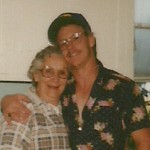
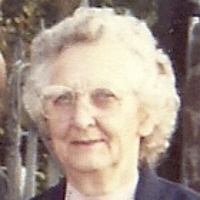 Funny thing about Groundhog Day, it has a way of sneaking up on you. It seems like the older I get, the more I feel like winter lasts an awfully long time. So, when Groundhog Day finally rolls around, and spring starts to be on everyone’s mind. Winter is emotionally wearing and leaves us weary…especially as it nears the end. I always greet Groundhog Day with mixed emotions, waiting to see if Punxsutawney Phil sees his shadow or not. Oh, I know that Punxsutawney Phil is only accurate about 39% of the time, but it gives me hope each year that he predicts an early spring. It’s silly, I know, but it’s fun to anticipate anyway.
Funny thing about Groundhog Day, it has a way of sneaking up on you. It seems like the older I get, the more I feel like winter lasts an awfully long time. So, when Groundhog Day finally rolls around, and spring starts to be on everyone’s mind. Winter is emotionally wearing and leaves us weary…especially as it nears the end. I always greet Groundhog Day with mixed emotions, waiting to see if Punxsutawney Phil sees his shadow or not. Oh, I know that Punxsutawney Phil is only accurate about 39% of the time, but it gives me hope each year that he predicts an early spring. It’s silly, I know, but it’s fun to anticipate anyway.
My husband’s grandmother, Vina Hein always had another reason to look forward to Groundhog Day…her birthday. If you took it seriously, the measure of “happy” could depend on whether or not a rodent in Pennsylvania saw his shadow or not, and of course, how much you liked winter. To be honest, I don’t remember if Grandma liked winter or not, and maybe as a child, she loved it, but I rather doubt that winter’s draw was as strong in her as she grew older. That seems to be the way of it. The older we get, the less we like the bitter cold of winter…at least if we have to be out in it. Nevertheless, I have a pretty good idea that Grandma rather liked spring better, because living on a ranch, spring brought so much new life. From baby calves to new chickens, to baby carrots, life begins anew in the spring.

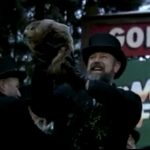
I suppose that is why I like spring, and the Groundhog Day announcement too. Spring and the summer that follows it, are my favorite times of year. The birds chirping and the flowers blooming, remind me that with every winter there lies beneath the snow, the promise of spring and the renewal of life on Earth. Maybe that is why Grandma liked her birthday too. Today would have been Grandma Hein’s 110th birthday. Happy birthday in Heaven Grandma Hein. We love and miss you very much.
 I was a born in the early days of the Vietnam War, so much of those early war years went unnoticed…by me anyway. The war official began on November 1, 1955, but there was much turmoil in the years leading up to the actual beginning of the war. It was an unpopular war, and probably the biggest news in the United States was the many protests against the war.
I was a born in the early days of the Vietnam War, so much of those early war years went unnoticed…by me anyway. The war official began on November 1, 1955, but there was much turmoil in the years leading up to the actual beginning of the war. It was an unpopular war, and probably the biggest news in the United States was the many protests against the war.
Nevertheless, there were some big operations that took place in the Vietnam War years. One such operation was Operation Plan (Oplan) 34A, and it was initiated on February 1, 1964, by the United States and the South Vietnamese. The plan called for raids by South Vietnamese commandos, operating under American orders, against North Vietnamese coastal and island installations. In this operation, the American forces were not directly involved in the actual raids, but United States Navy ships were on station to conduct electronic surveillance and monitor North Vietnamese defense responses under another program called Operation De Soto.
The Oplan 34A attacks played a major role in events that would eventually lead to what became known as the Gulf of Tonkin Incident. On August 2, 1964, North Vietnamese patrol boats, in response to an Oplan 34A attack by South Vietnamese gunboats against the North Vietnamese island of Hon Me, attacked the destroyer USS 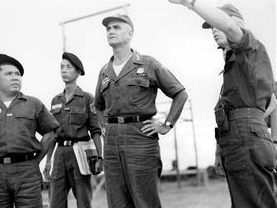 Maddox. The Maddox was conducting a De Soto mission in the area. Then, just two days after the first attack, there was another incident, but that attack remains unclear. The Maddox, joined by destroyer USS C. Turner Joy, engaged what were thought to be more attacking North Vietnamese patrol boats.
Maddox. The Maddox was conducting a De Soto mission in the area. Then, just two days after the first attack, there was another incident, but that attack remains unclear. The Maddox, joined by destroyer USS C. Turner Joy, engaged what were thought to be more attacking North Vietnamese patrol boats.
There is some question as to whether or not the second attack actually happened, but the incident provided the rationale for retaliatory air attacks against the North Vietnamese and the subsequent Tonkin Gulf Resolution. That became the basis for the initial escalation of the war in Vietnam, and ultimately brought about the insertion of United States combat troops into the area.

